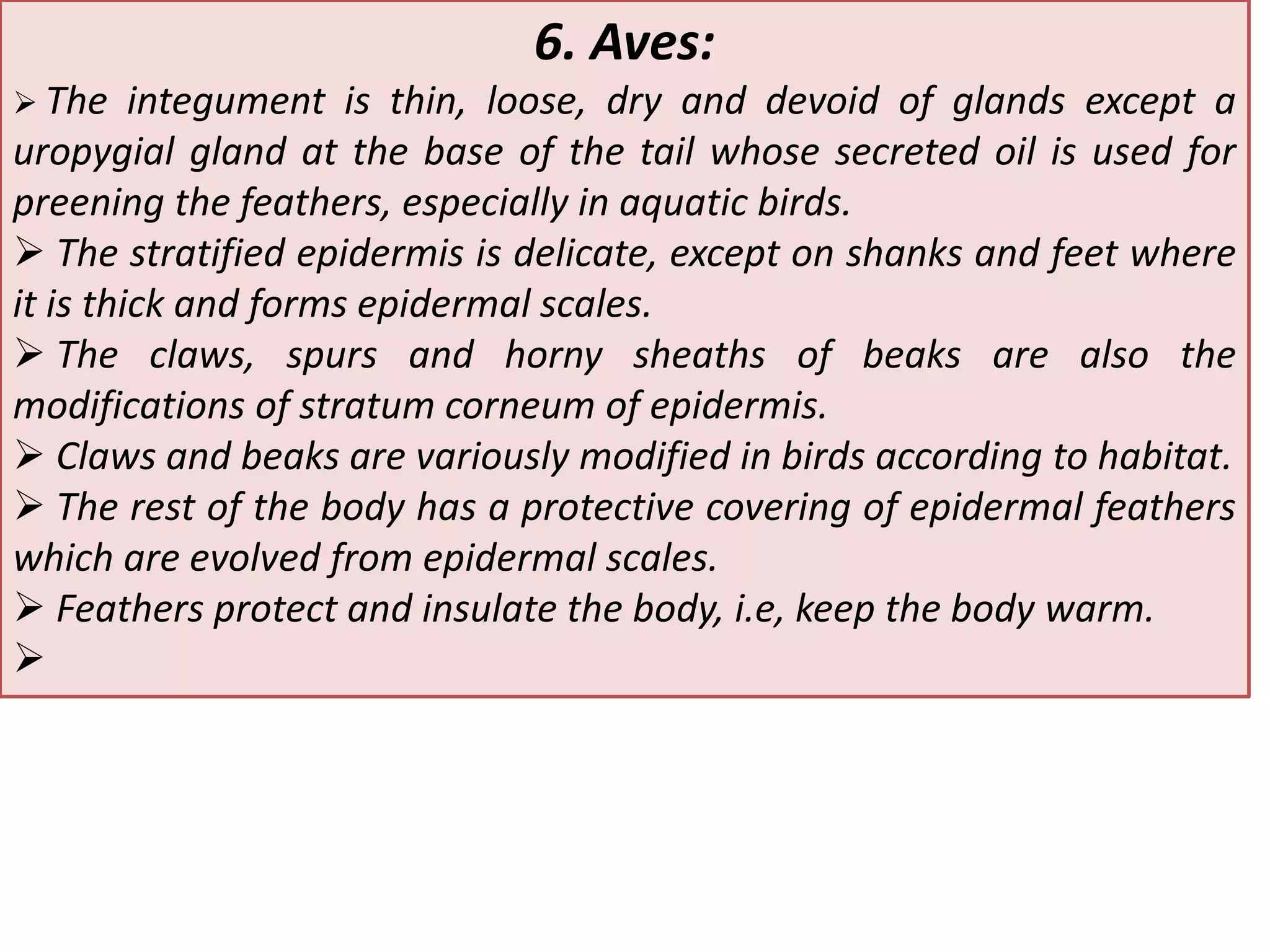The document discusses the integumentary system across different chordate groups. It describes the key features of skin in protochordates, cyclostomes, fish, amphibians, reptiles, birds, and mammals. The integumentary system generally consists of an outer epidermis layer and inner dermis layer, with variations in features like keratinization, glands, scales/feathers/hair, and pigment cells across groups. The skin serves protective, sensory, and excretory functions for chordates.























